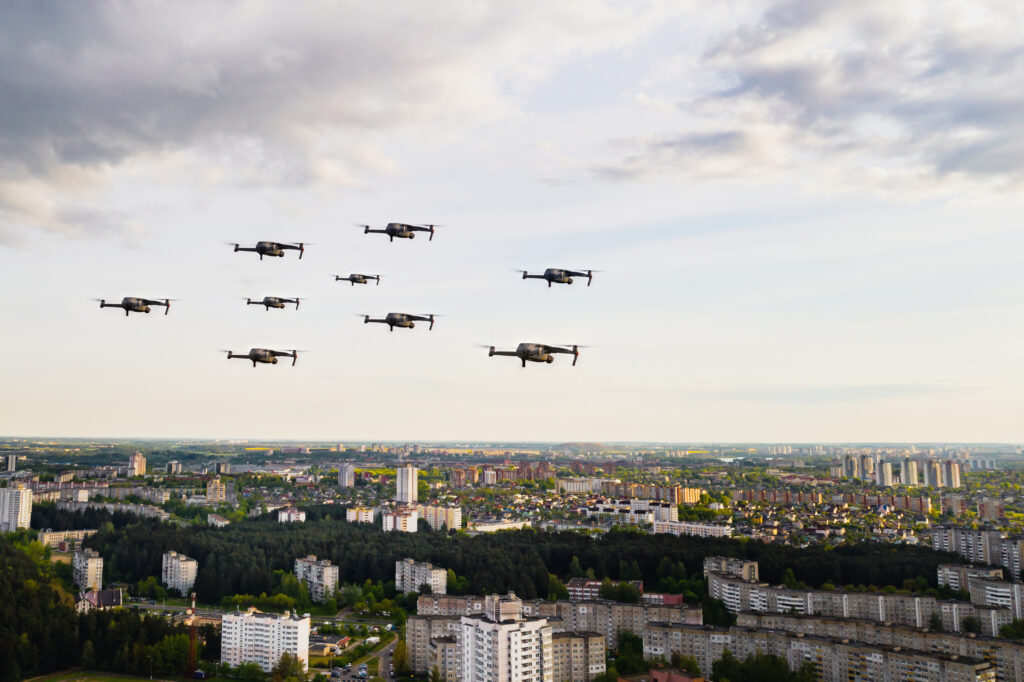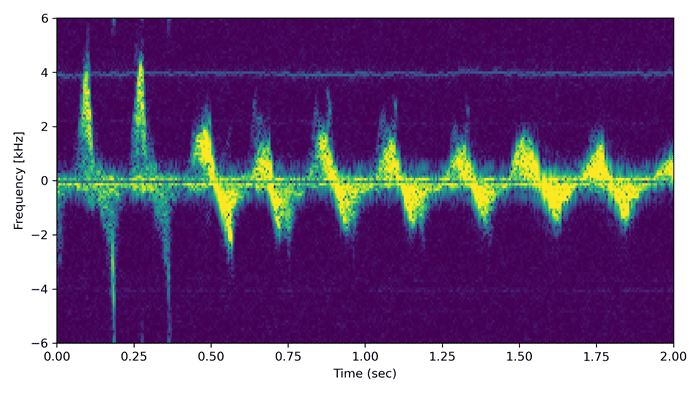AI, Cognitive Adaptation and micro-Doppler
An AI interface for the next generation of sensors that can adaptively determine the characteristics of a target, and ultimately determine the distinction between friend and foe.

The MMI-series Counter Uncrewed Aerial Systems (CUAS) uses Artificial Intelligence and (AI) and Cognitive Adaptative optimization in a tight feedback loop, greatly improving target classification over traditional fixed-mode radars. It is able to finely resolve micro-Doppler, separate the propellers and rotational rates, measure UAS dynamics, control system characteristics and maneuverability.
The MMI-series CUAS optimally allocates radar resources by tracking targets while extracting micro-Doppler and maintaining situational awareness over a large surveillance area.

Drone micro-Doppler: This image displays the micro-Doppler spectrum of a maneuvering drone captured using the MMI-series. Beyond target identification, the richly detailed micro-Doppler spectrum can reveal information such as the number and speed of the propellers and the dynamics of the drone control system.

Falcon micro-Doppler: This image shows the micro-Doppler spectrum of a Peregrine falcon taking flight from a perch captured using the MMI-series. The wing beats create an unmistakeable signature which is clearly distinguished from the micro-Doppler spectrum of a drone.
Real time imaging and adjustments
aiRadar’s MMI-series brings unprecedented flexibility to radar technology by enabling real-time adjustments to imaging parameters. This adaptability allows for the application of sophisticated algorithms that optimize radar performance for various needs.
- Dynamic Adaptation: The MMI platform swiftly adjusts settings on the fly, pausing routine scans for targeted high-resolution analysis when needed, then resuming without missing a beat.
- Enhanced Target Analysis: It utilizes precise bursts to capture detailed Doppler data on drones, employing advanced techniques for accurate height and distance measurements.
- Optimal Resource Utilization: This system dynamically shifts between radar modes—SAR, RAR, and custom—tailored to the specific demands of each mission, ideal for mobile platforms.
- Dynamic Positioning Application: Operating at 66 GHz, the radar ensures precise navigation by accurately tracking movements relative to fixed points in real time.
